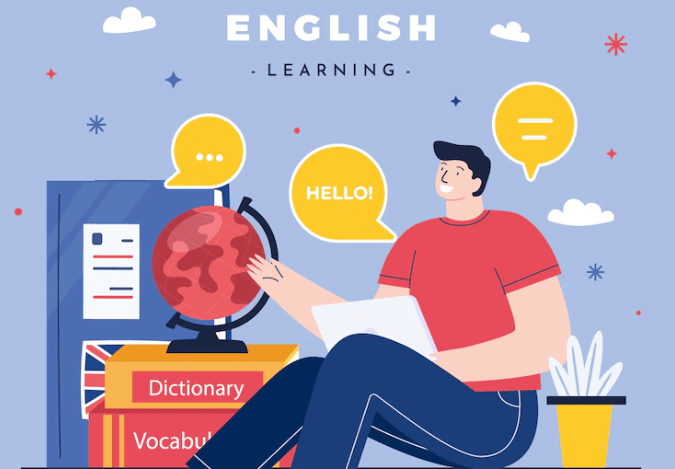Today you are going to learn about 15 pre-reading activities that you can use to start your reading lessons on the right foot.
When reading is taught, teachers usually follow a framework to teach a lesson, that framework has three stages:
| The Pre-reading stage |
| The While-Reading stage |
| The Post-Reading Stage |
The Warm-up and the 3 stages made up what is known as the Stages of a Reading Lesson.
The Pre-Reading section consists of activities and exercises to prepare students before they do the actual reading
Let’s Learn some about why and how these activities contribute to the process of reading
Tabla de contenido
- Why are Pre-Reading Activities Important?
- Pre-Reading Activities for the Classroom
- Pre-Reading Task #1: Discussion
- Pre-Reading Task #2: I’m listening to You
- Pre-Reading Task #3: Quotes
- Pre-Reading Task #4: Guessing from Words
- Pre-Reading Task #5: Guessing from Pictures
- Pre-Reading Task #6: Pictionary
- Pre-Reading Task #7: Guessing from sentences
- Pre-Reading Task #8: How many words do you know?
- Pre-Reading Task #9: Speed chatting
- Pre-Reading Task #10: Videos
- Pre-Reading Task #11: Brainstorming
- Pre-Reading Task #12:True or False
- Pre-Reading Task #13: Introducing Vocabulary
- Pre-Reading Task #14: KWL Charts
- Pre-Reading Task #15: Debate
- Pre-Reading Task #16: Pronunciation Tasks
Why are Pre-Reading Activities Important?
Pre-reading activities play an important role in a reading lesson.
Every reading lesson should start with activities to activate background knowledge and a series of activities to prepare students for the reading.
Pre-reading activities help students prepare for the reading activity by activating the relevant schemata and motivating them to read.
Pre-reading activities can also help learners anticipate the topic, vocabulary, and possibly important grammar structures in the texts.
Not doing pre-reading tasks will lead to students:
- Getting frustrated about know vocabulary
- Completing for no other reason than completing classwork
You have a lot to gain by teaching reading how it has been proven to work.
Pre-Reading Activities for the Classroom
There are many pre-reading activities that you can do in the classroom. More than we can even think of
Creativity leads to the creation of more activities to suit the needs and interests of a diverse community.
Here are some pre-reading activities that you can implement or modify to meet your student’s needs.
Pre-Reading Task #1: Discussion
The first pre-reading activity is about creating a discussion about the topic.
The Teacher prepares 4 sentences expressing opinions about the topic, then sticks them in the 4 corners of the classroom.
Students go and stand near the opinion they disagree with the most.
The groups explain why they disagree with the opinion.
Then students stand near the opinion they agree with the most and have a short discussion about it.
Pre-Reading Task #2: I’m listening to You
The second pre-listening task can help teachers promote oral interaction in the class.
This activity is called: “I am Listening to You”
This activity requires students to work in pairs. One of them talks while his or her partner listens for 1 minute about a topic.
Repeat with a new topic, students change roles and they can change partners after they have spoken and listened to each other.
Pre-Reading Task #3: Quotes
The third activity requires the use of quotes, you can choose quotes from great books or films
Good Reads, a very popular site for readers has a good list of quotes that you can choose from.
Find a quotation about the topic that you are going to cover and tell students to make groups of three and discuss the quotes you chose.
Students think about and answer questions like these:
- What does it mean?
- Do they agree with it? Why/Why not?
Note: Students can even bring their own quotes to the classroom
Pre-Reading Task #4: Guessing from Words
Before students look at the text they are going to read, the teacher writes 5 or 6 words from the text on the board and asks the students to guess the topic.
Students brainstorm ideas that could be written on the whiteboard for everyone to see and remember.
Additionally, the teacher can take a poll to see if students like ideas brainstormed by other students.
Finally, the teacher confirms how close or far they were.
Pre-Reading Task #5: Guessing from Pictures
The teacher finds 3 pictures or objects which are connected to the story or reading.
The teacher asks how those pictures and images are connected.
Finally, students read the text and check if they were right or wrong about the story connections they made.
Pre-Reading Task #6: Pictionary
Select some of the key words from the text.
Divide the class into two or three groups.
A learner from each group (at the same time) comes to the whiteboard.
They are told the word and they have to draw that word. They are not allowed to use letters or numbers in their drawing.
The other students try to guess what the word is and thus earn points for their team.
Pre-Reading Task #7: Guessing from sentences
The teacher dictates 3 sentences from the reading passage. Students write them down and check with a friend if they are correct.
The sentences are written on the board if necessary as a final check.
Then the teacher asks how these sentences might be connected.
Students predict and then read the text quickly to check their predictions.
Pre-Reading Task #8: How many words do you know?
The teacher prepares the board by writing the letters of the alphabet in 3 or 4 columns.
The students form two lines standing behind each other.
Use 2 colored markers so you know which team wrote what. The first student at the front of each team gets the board marker.
The teacher introduces a topic to the class.
The 2 students move to the board and write one word related to the topic on the board next to the letter it begins with, then pass the marker to the next student in their team and go to the back of the queue.
The 2 teams compete to write as many words as possible on the board in 3 minutes.
The team with the largest number of appropriate and correctly spelled answers wins!
Pre-Reading Task #9: Speed chatting
Prepare one or two simple questions related to the topic of the reading.
Ask the class to make two rows facing each other.
Then, encourage your learners to ask each other questions about the topic, but warn them that they only have 60 seconds to do so.
Once the 60 seconds are up, one of the rows rotates so each learner has a new partner.
Repeat the process several times.
Pre-Reading Task #10: Videos
There is so much good free content available these days. First, find a short video relating to the topic of the reading.
I would suggest something around three minutes long.
After watching the video yourself, prepare some simple discussion questions.
Play the video and then ask the students to talk with a partner about what they watched.
Pre-Reading Task #11: Brainstorming
The teacher gives the title of the reading to the learners and students have to share all their knowledge about the topic.
The goal of this activity is to help learners create expectations about what they are about to read and then see if their expectations were met.
For example,
If you have to teach about the influence of social media on teenagers, students can take turns and talk about the topic,
When they read the passage, they confirm their expectations.
Pre-Reading Task #12:True or False
Let’s take the example of the influence of social media on teenagers again.
You can come to the classroom and read a few statements and ask them if they think those statements are true or false.
Don’t reveal the answers.
Let them confirm if they were right or wrong when they are reading the text.
Pre-Reading Task #13: Introducing Vocabulary
In the context of an ESL Classroom, it will always be important to introduce key vocabulary so students don’t get discouraged by unknown words while they read.
Introducing vocabulary doesn’t have to be a boring task.
You can easily create a wordle with key vocabulary and see if students can tell you something about those words.
Another tool that can help you provide and study vocabulary is Wordwall.
Pre-Reading Task #14: KWL Charts
Have you ever used KWL Charts in the classrooms?
KWL Charts are simple.
Just have students write everything they know about the topic (K column) and everything they want to know (W column) and what they learned after the reading (L Column)
Pre-Reading Task #15: Debate
Prepare some controversial quotes related to the topic they are about to read.
Show the quotes to the learners and ask students to comment on them.
Ask how students feel about them.
Ask the class to comment on opposite views held by other learners.
Pre-Reading Task #16: Pronunciation Tasks
Another way to introduce vocabulary is to give students some words transcribed phonetically.
You can take the phonetic transcriptions from the Cambridge Online Dictionary.
You can use several online tools to show the phonetic transcriptions to your learners.
I use Wordwall (Random cards), alternatively, you can use Quizlet.
Students make groups of 3 and analyze what those words are and how they are related to the topic.


